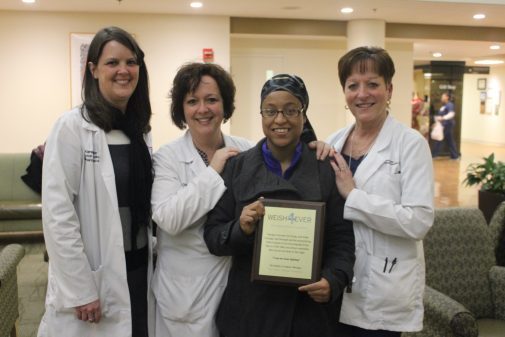
Why I have the best job in the world

I started my nursing career at Advocate South Suburban Hospital in 1979. It didn’t take long before I knew where my career would head.
It was so easy to become close to my oncology patients—to get to know their life stories, families, jobs, hopes and goals. I worked at the hospital for 10 years and then joined a private practice for the next 25. Time and time again, over more than three decades in nursing, I have been humbled by my patients’ journeys and realized how being healthy is such a blessing.
There is no doubt I have the best job in the world.
I returned to Advocate South Suburban Hospital three years ago as a breast health navigator. In previous roles, the personal connection with my patients had to be nurtured over time, but I connect with my breast cancer patients almost immediately.
I first meet my patients when they are told their breast imaging is abnormal and they need to have a biopsy. It is a very emotional and vulnerable time. Unlike other procedures in diagnostic imaging, breast patients I meet know they may have breast cancer and are often experiencing a great deal of anxiety. Supporting them through this process draws us close very quickly.
As a nurse navigator, I offer emotional support and reassurance during the biopsy procedure and try to alleviate their fears by explaining each step and introducing them to our wonderful team of nurses and doctors. I dress their wounds, follow up with phone calls and check pathology results several times a day so they don’t have to wait any longer for their results than is necessary.
When the results come in, I typically call with negative results, but ask the patient to come in with a family member if they are positive. You can imagine the gamut of emotions that a patient feels when they are asked to come in; most patients have an idea they may have a positive biopsy at this point. As stressful as it is, I do not like to give these results over the phone since a positive result requires so much support.
During these consults, we review their results and discuss their treatment needs and options. I have already set up their appointments to see a breast surgeon and medical and radiation oncologists. I also give them a wealth of resources and enroll them in the American Cancer Society and Cancer Support Center programs. They may not know how much they need this support at that time, but eventually come to understand its value.
When patients come in for surgery, I am by their side. I support them both before the procedure and meet them after. I also follow my patients during additional treatments such as chemotherapy and radiation. Sometimes I provide educational and emotional support, but other times, it’s just to check in to see how they are tolerating the treatments, or to assist with financial needs or transportation issues. Very often, there is no official navigation need—just a need to talk to a familiar person.
One would be surprised at how much these little acts help them during this time in their life. Anything I can do to ease the burden for them is part of my job, as I see it.
At the end of their treatments, I meet with them again, usually in the same consultation room where they received their initial diagnosis, and sit with them and their families to review their Survivorship Care Plan.
This is the powerful moment when things have finally come full circle.
At the beginning, I often tell patients that we will meet like this at the end of their treatments, and it seems so far away to them. To finally get here is such an accomplishment full of joy and hope for the patient. They did it!
I can’t describe what this meeting means to everyone involved. It’s often full of emotions and plenty of tears. Every time I experience it, I’m reminded of the difference I have made in my patient’s life and how privileged I am to be a part of it.









You are an angel wish more nurses were like you.